Sonification in Eurorack
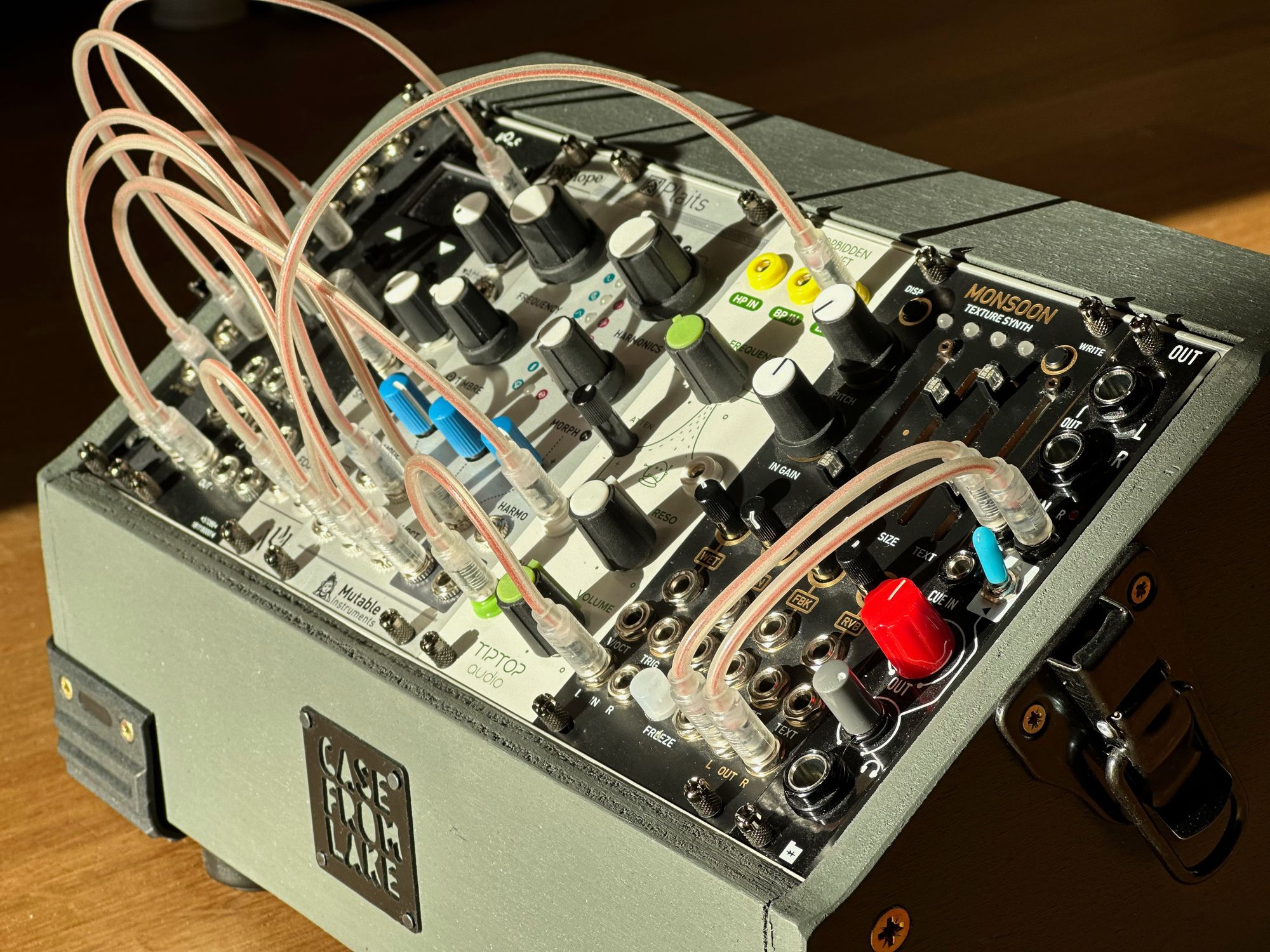
The greatest joy of modular synthesizers is that you get to create a new instrument every time you sit down. You start with a bunch of modules that send and receive signals of a few basic types (triggers, gates, control voltage, audio), and you decide what goes where.
You get to answer questions like: "Will my sequencer control this oscillator or that one?" or "What parameters do I want to control automatically with an LFO?" or "Should my audio signal go through this effect or that one?". It's a deeply playful experience – "a series of interesting decisions", to borrow the terminology of videogame developer Sid Meier.
This ability to connect things up in whatever way you want is a total joy for sonification. Your data becomes a signal like any other, which can then be processed however you like and control whatever you want. Best of all, you can change what it controls at any time.
So over the past year or so I've been figuring out ways to bring sonification into the modular world. The easiest way is probably the Loud Numbers plugin for the VCV Rack software platform, which lets you simulate a modular synthesizer on your computer. It's a great starting point, with zero setup costs. If you're just getting started, I strongly recommend starting here.
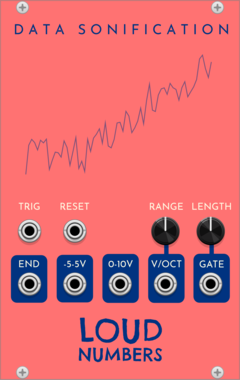
But I also wanted to bring data sonification into the world of Eurorack, for those who (like me) have a physical rack of hardware. For this I think there are four viable approaches:
- Use whatever software you like to do the sonification of data into MIDI on your computer, and then use a MIDI-to-CV module (like the super-cheap Mutable Instruments' CVpal, or any of the bazillions of alternatives) to bring it into the rack.
- Run VCV Rack on your computer and do the sonification using the Loud Numbers module there, bringing its virtual control voltages into the real world using a DC-coupled audio interface, like the Expert Sleepers ES-8 or ES-9. I have an ES-9, and this method works well, but it feels kinda weird to be working in both a virtual and a real modular environment at the same time, and there's always the issue of latency.
- Do the sonification on the Monome Norns music computer, using the Loud Numbers script there, then connect it up to the Monome Crow module to generate Eurorack-level control voltages. This is my favourite solution (see below) but it requires owning hardware that's currently kinda unobtainium.
- Code up something custom for one of the many modules that contain simple computers - the Befaco Lich, maybe, or the Winterbloom Sol. I've never tried this, so don't have much I can share, but I'm fairly sure that basic sonification at least should be possible.
My custom Eurorack case for sonification
In late 2022, I started thinking about developing a sonification rack that would be portable enough to travel with, but flexible enough to do all kinds of different sonification work. I commissioned Case From Lake to make me a small, custom case, and picked up an Endorphines 2HP Power module to power it. Here are some glamour shots of the setup.
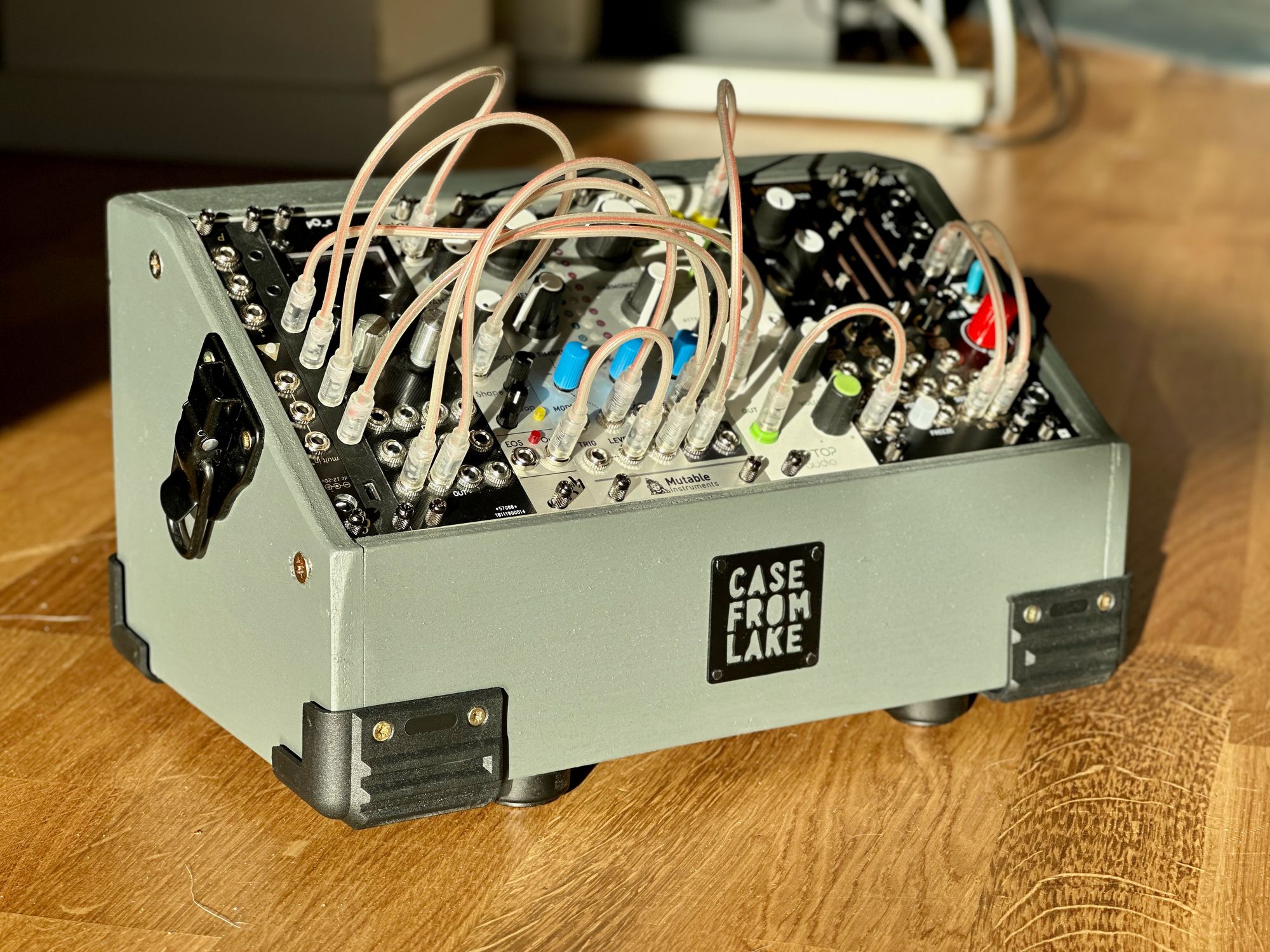
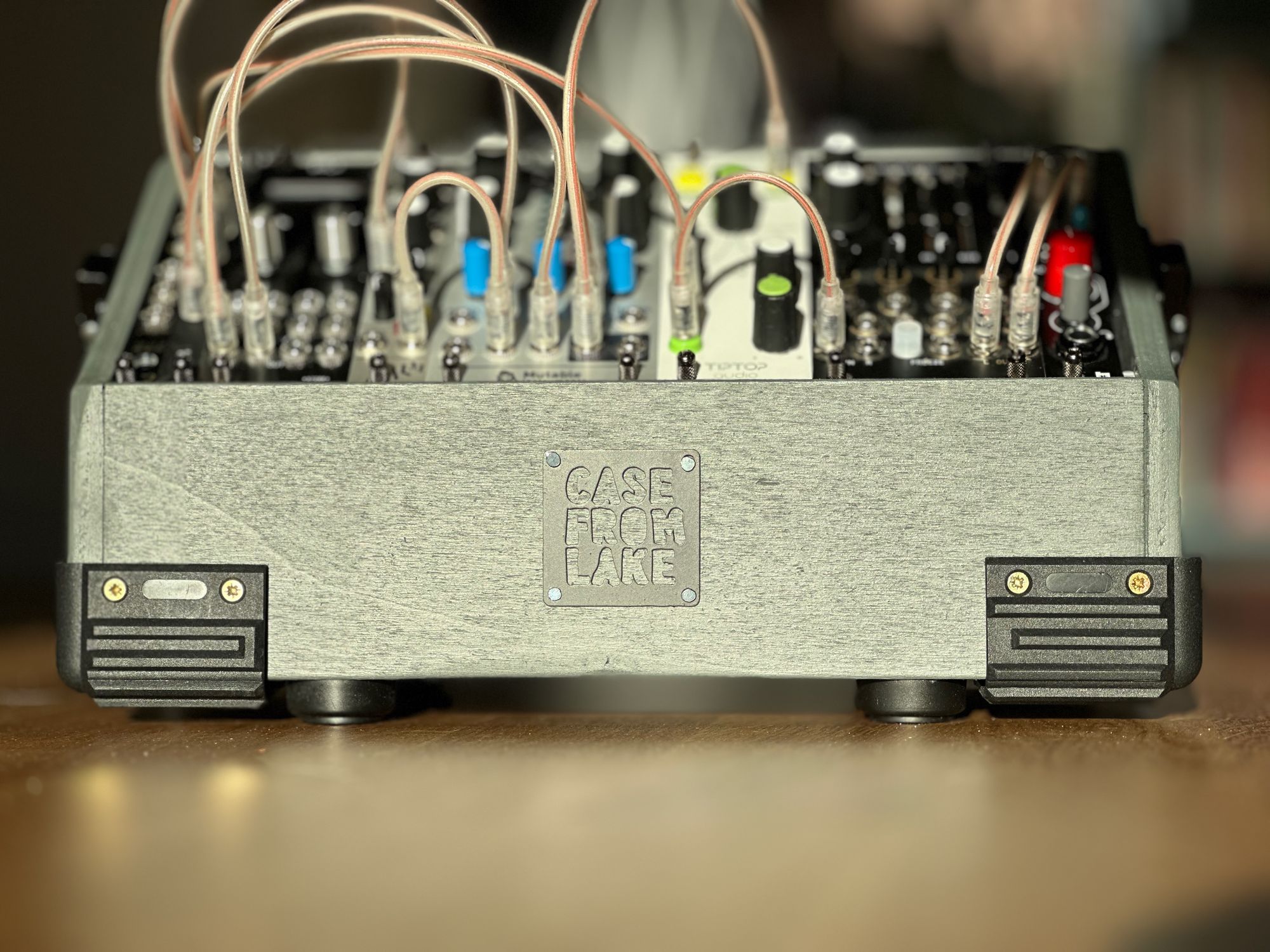

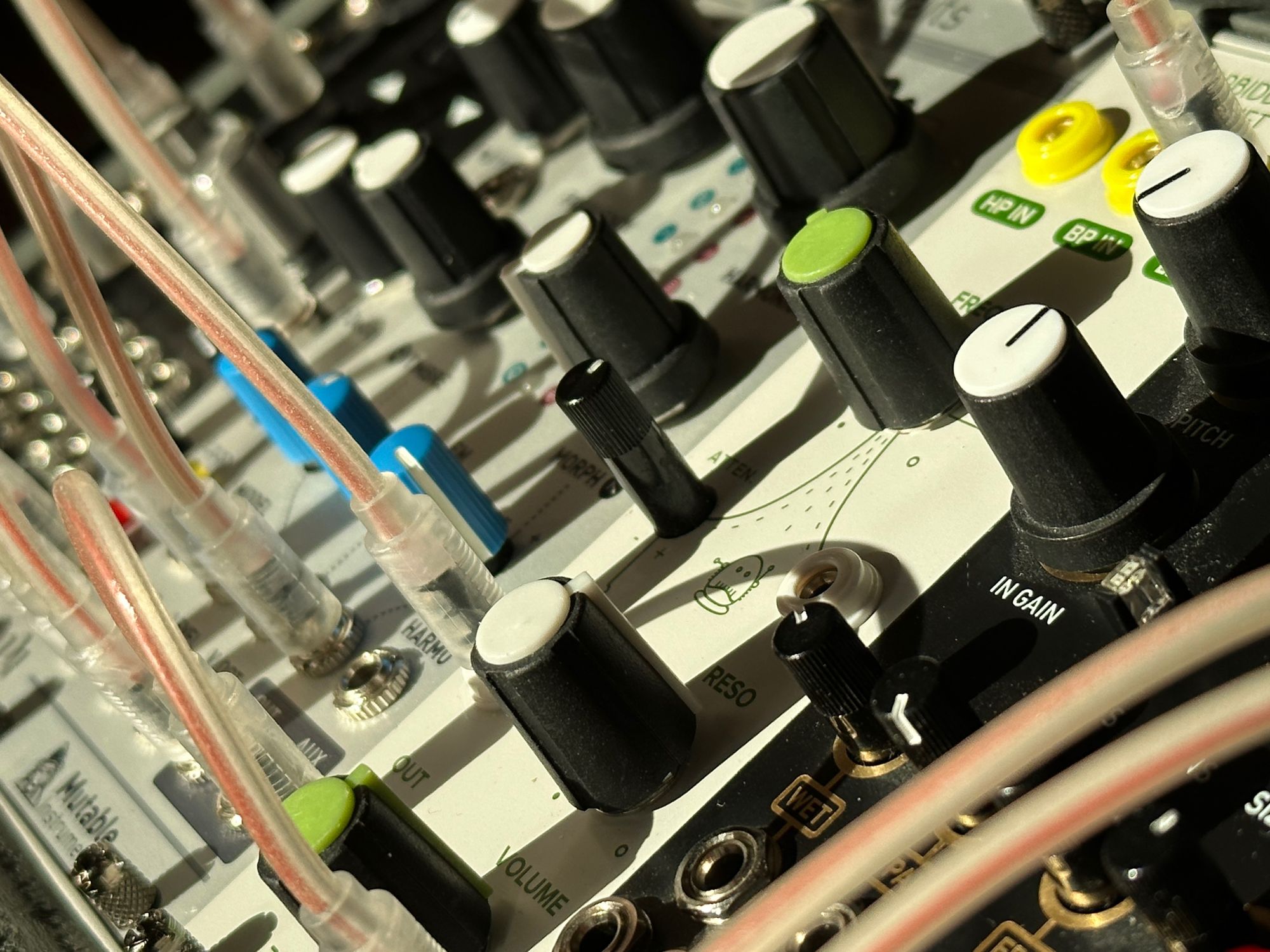
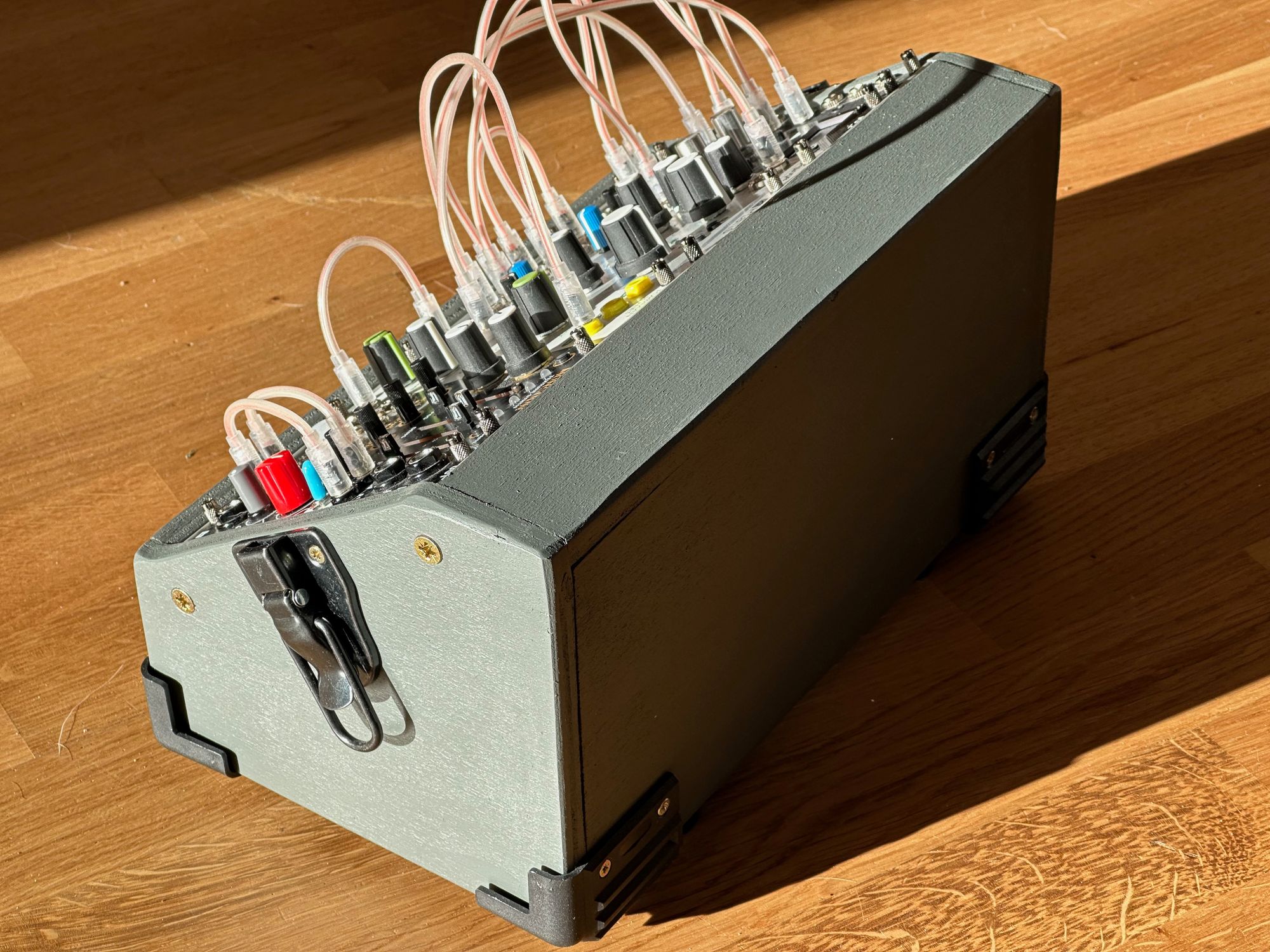
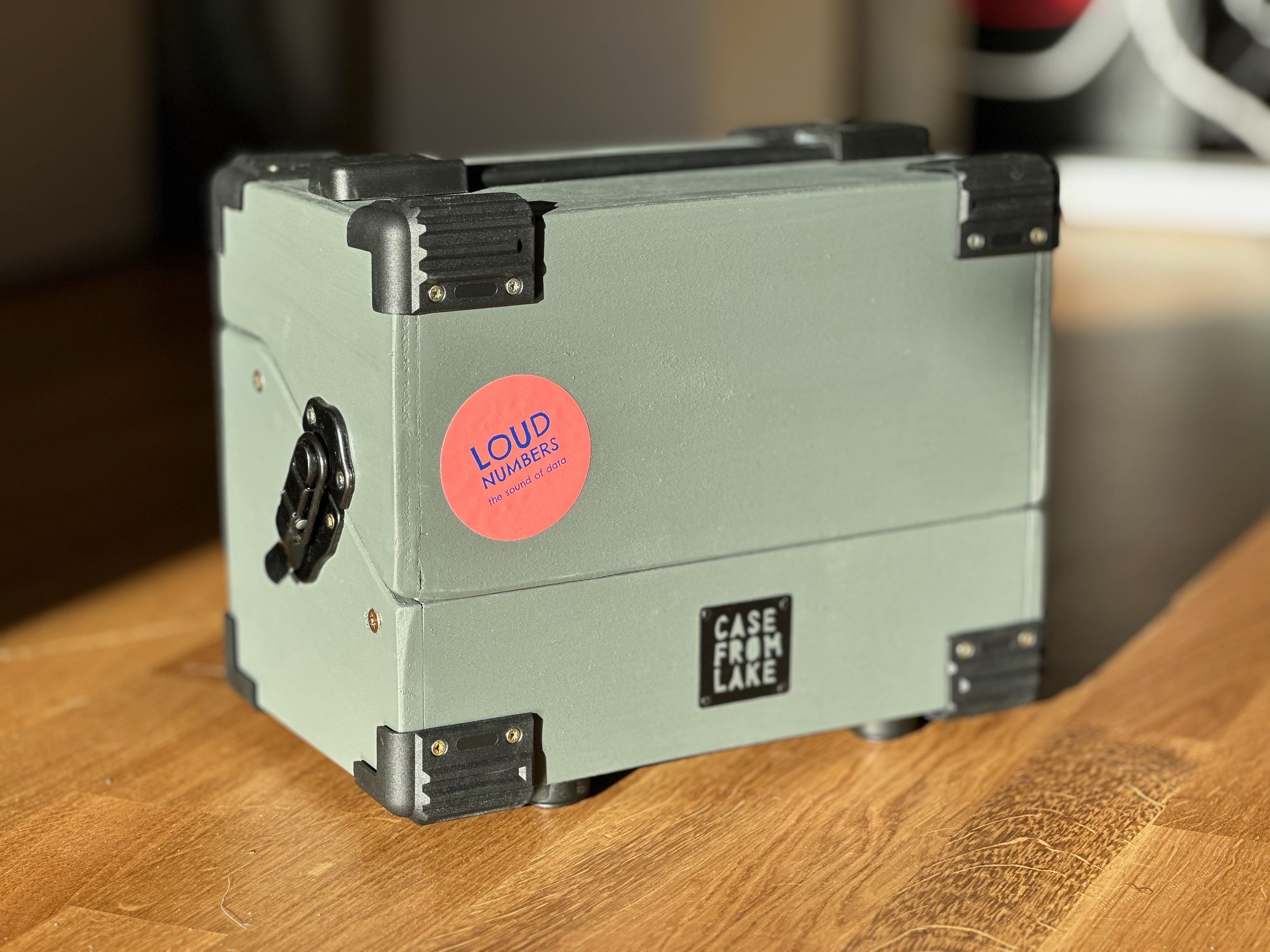
I plan to use this case alongside my Monome Norns, using approach three above to offload the sonification work onto the Loud Numbers script that I wrote. The script handles sonification and quantisation, outputting triggers, 1V/Oct note signals, and then two CV signals (0-10V and +-5V) on its four outputs. It can also be triggered by a Eurorack clock signal. The module selection aims to maximise both flexibility and sound design options in as small a size as possible.

From L-R the modules are:
- Endorphines 2HP Power. This provides power to the system, and doubles as a buffered mult. Tonnes of utility in just 2HP!
- Monome Crow. This is where the sonification comes into the case. I'm doing sonification on the Monome Norns and sending the signals the data creates to Crow over USB. It has two inputs (for clock and triggers), and four outputs (triggers, 1V/Oct, 0-10V CV and +-5V CV).
- Ornament and Crime. This is a utility module. I've got the micro version, with the Hemisphere Suite firmware installed, giving me access to a tonne of tiny utilities, of which I can run two at the same time. Common uses for this so far include quantising, attentuation, modulation, probability, burst, slew, clock, switching and tuning.
- ALM Pip Slope. This generates envelopes and other modulation, and was the only module I acquired specifically for this case. I mainly wanted the ability to use sonification to modulate the attack and decay parameters of an envelope.
- Mutable Instruments Plaits. My sound source. Plaits has 18 different synthesis models (with the latest firmware), ranging from classic sine or square waves to wild FM, resonators and even speech synthesis. The built-in low-pass gate is an added bonus that saves having to add an additional LPG or VCA. The AUX output could be used as a noise source, or something else fun. This module is discontinued, but it's open-source, so any of the clones would do.
- TipTop Audio Forbidden Planet. I chose this filter, out of the many 8HP filters available, because it's characterful and fun and I wasn't using it for anything else. It would be easy enough to swap in something else if I want a change. WMD Overseer, God's Box Humpback, Mutable Ripples, the Doepfer A-124 Wasp Filter, Xaoc Zagrzeb or Bastl Ikarie would also be good options. Filters are a weirdly personal thing, though, and I love the Forbidden Planet.
- Monsoon. This is basically Mutable Instruments Clouds in an improved format. I have an unbranded but attractive DIY build that I got from Reverb - my second module ever. Clouds is known for granular stuff, but in this situation it's being mostly used to add reverb and a bit of stereo interest to what was purely mono before this point in the signal chain. With the Parasites firmware, it could also be a resonator, more customisable reverb, looping delay, or time-stretcher. Tonnes of options!
- Befaco Out V3. This is my output module, converting Eurorack level signals to line level signals, with a big volume knob and a headphone jack. Does everything it needs to do.
Here's a Modulargrid link if you want to inspect the setup in more detail. The power draw is a surprisingly economical 379 mA, meaning that it should be easy enough to run this off a battery if I wanted to - an option I'm keen to explore.
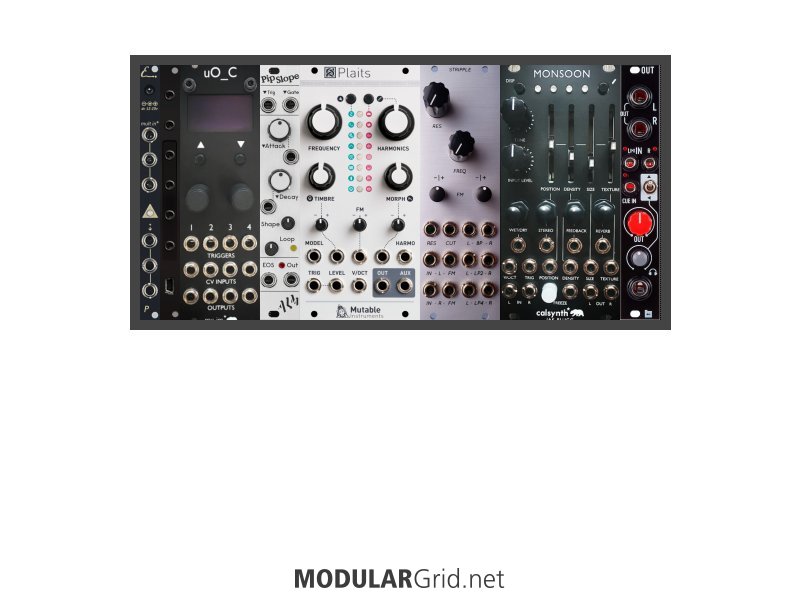
I was going to conclude this article with a list of all the different things I can map to data in this setup, but given the vast array of possibilities afforded by Ornament & Crime, Plaits and Monsoon, writing an exhaustive list would be far too long. So instead here's a short list of the mappings I'm initially excited about exploring.
- Pitch
- Tempo
- Volume
- Filter cutoff
- Grain size
- Grain density
- Envelope attack
- Envelope decay
- Depth of modulation
- Reverb
- ...and much more.
If you have any questions about the system and what it's capable of, then join Decibels - the sonification community I help run - and ask there. If you want to hear more of my sonification experiments, go check out Loud Numbers. Finally, if you want to follow my work then subscribe to my newsletter.
Thanks for reading!



